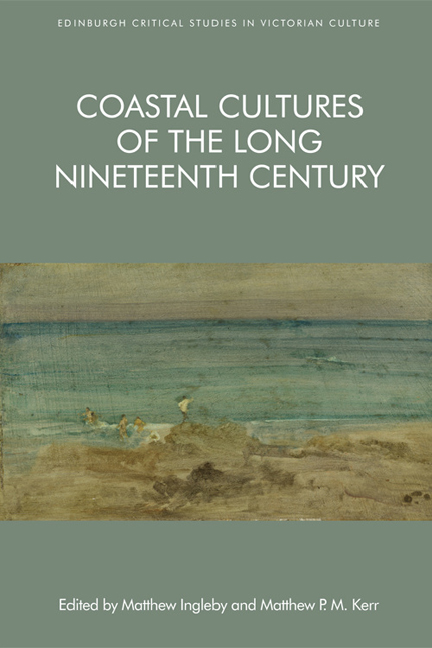2 - A Breath of Fresh Air: Constable and the Coast
Published online by Cambridge University Press: 01 May 2021
Summary
Constable is usually thought of as a painter of inland countryside: he is famous for his depictions of canal scenes and meadows, enlivened by country labourers and animals. In contrast, his coastal paintings might be considered as a somewhat peripheral part of his output. Yet, as Anne Lyles has recently pointed out, ‘coastal and marine subjects form an important part … of his full range as a landscape painter’, and it could be argued that they are central to his concerns with light, atmosphere and weather. There were many reasons why Constable was keen on coastal scenery. The coast was an excellent place to study the clouds and the sky, and the movement of waves and wind. It played a key role in the development of his mastery of what he called the ‘chiaroscuro of nature’: those evanescent effects that gave life, contrast and dynamic movement to landscape painting. In addition, coastal scenes engaged many of his deepest beliefs and emotions. In the long nineteenth century, the coast had a threefold significance. Firstly, as the edge of the land and site of frequent shipwrecks, it symbolised birth, death and immortality. Secondly, as boundary of the nation, it needed to be well protected against enemy invasion, which was a very real threat in the early 1800s and haunted the national consciousness for the rest of the century. Thirdly, the coast was a location where invalids, especially consumptives, hoped to be restored to health – a place of fresh breezes, a source of easy breathing and life-giving fecundity.
Constable's sketch Hove Beach (Figure 2.1), with its solitary figure on the beach, gazing out to sea, is reminiscent of Caspar David Friedrich's famous painting The Monk by the Sea (1809). Constable was almost certainly unaware of the Friedrich work, but the paintings may have a common origin in English poetry. The German poet Heinrich von Kleist wrote that Friedrich's painting seemed to be dreaming Young's Night Thoughts, and that part of the attraction of gazing at the sea from the shore consisted in the idea that the human soul has come from there and must return. Edward Young's long poem, Night Thoughts on Life, Death and Immortality (1742–5), repeatedly uses the ocean as a metaphor for eternal life. Young imagines the human soul waiting to embark across the sea of death, beyond which there are ‘worlds unknown’.
- Type
- Chapter
- Information
- Coastal Cultures of the Long Nineteenth Century , pp. 51 - 68Publisher: Edinburgh University PressPrint publication year: 2018



